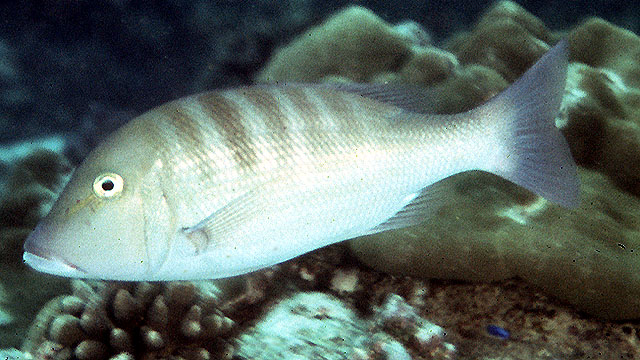| Lethrinidae (Emperors or scavengers), subfamily: Lethrininae |
| 55 cm TL (male/unsexed) |
|
reef-associated; marine; depth range - 50 m, non-migratory |
| Western Indian Ocean: known only from the Seychelles. Has been synonymized with Lethrinus mahsena. |
|
Dorsal spines (total): 10-10; Dorsal soft rays (total): 9-9; Anal spines: 3-3; Anal soft rays: 8-8. Body is yellowish bronze or gray, becoming lighter ventrally. Sometimes three bronze stripes are on the upper side. The head is gray, brown or sometimes bronze with a series of yellowish cross stripes on the upper portion of the head and snout. A light streak radiates from the eye to the anterior nostril. the lower edge of the orbit has dark purplish spots. The maxilla is reddish. The fins are pale, yellowish or bronze. |
| Found over seagrass beds, coral reefs and adjacent sandy areas. Feeds mainly on echinoderms, crustaceans, and fish, and to a lesser degree on mollusks. Smaller, more numerous females than males have been confirmed for the Saya de Malta population (Ref. 2295). Marketed fresh (Ref. 171). |
|
Least Concern (LC); Date assessed: 28 January 2009 Ref. (130435)
|
| harmless |
Source and more info: www.fishbase.org. For personal, classroom, and other internal use only. Not for publication.

